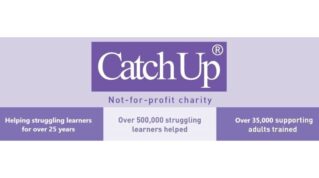The last 18 months have seen pupils, and teachers, performing the hokey cokey; one day we were in school, the next we weren’t. The impact the school closures, home learning and lost learning have had on pupils is becoming clear, and we are really only just beginning to fully identify the gaps and put plans in place to redress the imbalance of opportunity for all our learners. With teachers’ workload and wellbeing in mind, we need to focus our energies on the pedagogies that will have the greatest impact on pupils, not only their progress and attainment but also on their confidence.
It is clear in primary mathematics that there are three aspects that have suffered as a result of the pandemic:
- pupils’ self-confidence and self-belief in their mathematical ability
- the accurate use of mathematical vocabulary
- the depth of reasoning.
Confidence in yourself as a mathematician is achieved partly through praise, comparing yourself to peers, and the availability of prompt feedback. Despite teachers’ best efforts, it has not been possible to deliver on all of these, all of the time, to all of our pupils. Parents and carers stepped into the breach, delivering their interpretation of maths teaching and guidance, some more successfully than others. Born out of this was a greater appreciation of the challenges teachers face to educate their children – this we can capitalise upon and I will return to it later. However, in the absence of the right feedback, at the right time, pupil confidence has taken a dip in many cases.
Mathematical language was highlighted in the DfE Mathematics guidance: Key Stages 1 and 2 (June 2020):
“The development and use of precise and accurate language in mathematics is important. Once pupils have learnt to use a core sentence structure, they should be able to adapt and reason with it to apply their understanding in new contexts.”
Without accurate language, even the most fluent mathematician will struggle to reason effectively and make connections to prior learning; this is what we see teachers battling with in classrooms as we start the new academic year.

So, what to do? Where do we start and what tools do we have at our disposal?
Maybe it’s time to review our understanding of the work of Jerome Bruner, whose name, amongst others, has become inextricably linked to the concrete, pictorial, abstract approach (CPA) we see referenced so frequently as part of changes to the way we approach the teaching of mathematics. As the Education Endowment Foundation guidance document ‘Improving Mathematics in the Early Years and Key Stage 1’ points out:
“Children benefit from practical, first-hand experiences of moving and interacting with manipulatives to develop mathematical ideas. They help children make sense of mathematical concepts, develop visual images, increase engagement and enjoyment, help practitioners see what children understand and provide a bridge to abstract thinking.”
Over the last 18 months we have seen pupils’ access to manipulatives, which support them in the development of their mathematical understanding, greatly reduced. Could this be partly to blame for some of the barriers many pupils currently face?
In the DfE Mathematics guidance: Key Stages 1 and 2 (June 2020), “a core set of representations have been selected to expose important mathematical structures and ideas, and make them accessible to pupils.” These have been welcomed by maths leads and teachers as a readymade, high quality resource that can be used to address gaps in learning and prepare pupils for their next steps. Presented on an interactive whiteboard, the choice of representation has already been made, which has the consequent effect of taking the onus off the teacher to develop the level of subject knowledge needed to make that decision themselves.
Herein lies the first issue. Without the appropriate level of subject knowledge, even the most enthusiastic supporter of manipulatives is likely to fall into some commonly seen traps.
- The purpose and importance of the manipulative for developing conceptual understanding is not recognised.
- The manipulative chosen by the teacher is not the most effective at revealing the structure of the mathematics or clarifying the concept.
- There is a lack of knowledge of the models pupils used previously to understand the underpinning concept, impacting on progression of understanding, and making it difficult for pupils to make connections to prior learning.
In fact, “consistent use of the same representations across year groups help to connect prior learning to new learning.”
DfE Mathematics guidance: Key Stages 1 and 2 (June 2020)
With so many scheme providers producing animated materials, alongside those developed by NCETM, we are beginning to see some lessons delivered entirely on slides, with no recourse to practical, hands-on equipment, or access limited only to parts of the lesson. This is not surprising when you consider that this has been our single option for much of our teaching in recent months. However, if we are not careful, the ‘concrete’ from the CPA approach could disappear before our very eyes, in favour of these pictorial representations.
It is in manipulating the manipulative that we see the mathematics in action, exploring and illuminating the mathematical structures, and connecting our actions and the materials to the language that is threaded throughout high quality teaching. In a recent lesson I observed a child struggling to explain her thinking because the language she needed did not come readily to her. However, as soon as the Dienes were placed in front of her, her talk transformed, becoming precise and concise simultaneously. Elsewhere a child with special educational needs saw no link between the direct teaching input and a means of solving the questions given to practise the new learning. Yet, presented with her place value counters and mat that she had used in the lesson introduction, a realisation dawned and she began to collect what she needed to represent the six boxes of 100,000 pencils.
The effect a manipulative can have on a child’s reasoning is often underestimated, hence why we often see resources limited to younger children or lower attaining pupils. In Year 2, answering the question ‘How do you know 40p is greater than 20p?’ is difficult to do with accuracy and depth if you don’t have access to the coins in front of you to align into a comparative bar model. Similarly, describing and then proving that you will always make an even number when you add two odd numbers together becomes so much more efficient when you take two Numicon pieces and put the statement to the test.
Much time, effort and money has been used to create the high-quality learning resources available to schools, but they cannot replicate the effect that hands-on maths has for all our pupils as they encounter new concepts, master new vocabulary and deepen their reasoning. What they do provide is a guide as to the most appropriate pieces of equipment to teach the learning and deepen understanding. However,
“Manipulatives and representations are just tools: how they are used is essential. They need to be used purposefully and appropriately to have an impact.”
Education Endowment Foundation guidance document ‘Improving Mathematics in Key Stages 2 and 3’
In lessons where they are not being used effectively, we may need to strengthen the subject knowledge of the adults in the room. The NCETM Mastery Professional Development Materials are an excellent starting point for this CPD https://www.ncetm.org.uk/professional-development/.
“The materials can support teachers to develop their subject and pedagogical knowledge and so help to improve mathematics teaching in combination with other high-quality resources, such as textbooks.” https://www.ncetm.org.uk/teaching-for-mastery/mastery-materials/primary-mastery-professional-development/

But let’s not stop there!
What about training for our parents and carers to harness their recent engagement in their child’s education? We have had our eyes opened to a whole raft of technological tools and approaches that we should continue to capitalise upon and adjust to suit new purposes. Parental engagement in workshops has often fallen flat because there never seems to be a right time to target the intended audience. Now we have the means and the skills to put video tips and online workshops together that can be accessed at any time.
Of course, engagement in workshops is not the only barrier to home-learning though. To ensure equality of access we need to give real consideration to improving parity between maths learning in the classroom and at home. If we believe in the power of the CPA approach, we need to consider how we promote the use of concrete resources wherever children are learning. I can’t think of many families I’ve worked with who have access to sufficient counters or tiles to construct arrays when rehearsing factors, but a box of rice cakes makes an entirely appropriate substitute… and you can eat them afterwards. Now that really is hands-on maths!
Sarah Carpenter is the Specialist Improvement Adviser for Maths at The Education People. The Education People are the one stop shop for education support and guidance covering the whole age range from early years to adults. Our diverse range of products and services are created by our educational experts who have a wealth of experience as headteachers, senior leaders and accomplished trainers.
To find out how we can support your school or setting, visit our website at www.theeducationpeople.org
















Your thoughts